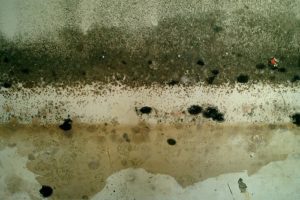How Indoor Humidity Affects You and Your Home

Humidity levels aren’t easily measured unless you have a hygrometer on hand, but you may notice key indicators that clue you to high or low humidity levels anyway. Poorly managed humidity can harm both your home and your health. If you’re not careful, you could even lose precious collectibles to mismanaged conditions in your home’s environment. Watch out for some of the hazardous things that high or low humidity can do.
Creating a Breeding Ground for Bacteria

Image via Flickr by iBjorn
High humidity levels encourage the growth of mold, mildew, and bacteria. These thrive in damp environments. Once a microbial growth has taken hold, it can be difficult to get rid of. This type of moisture-related damage can lead to peeling wallpaper, damaged drywall, and rot.
Watch for signs of these growths in places where moisture is regularly high, such as the bathroom or kitchen. Using an exhaust fan that vents to the outside will help. If you do notice a growth, address the problem right away.
Harming Your Health
Both low and high humidity can impact your health. Low humidity leads to dry eyes, nose, throat, and skin. You may suffer from nosebleeds. When the skin in your nose becomes dry and cracked, it also makes you more susceptible to catching colds and other bugs.
High humidity can cause an area to feel warmer than it really is. This can lead to feelings of lethargy and fatigue. In more extreme cases, you may suffer from muscle cramps, dehydration, and heat exhaustion. When high humidity causes mold or mildew growth, exposure to these irritants can cause additional problems, ranging from allergy symptoms to severe headaches and nausea.
Damaging Your Home
If you allow humidity levels to stay too high for too long, your home can sustain serious damage, including peeling paint and soggy drywall. Low humidity can cause wood to dry and crack.
Maintaining consistent humidity levels is key here, because rapid swings between high and low humidity are problematic as well. This can cause wood to warp, gap, or cup from the regular expansion and contraction that happen as humidity levels change. Incorporating a solution with both a humidifier and dehumidifier is the best way to minimize humidity’s impact on your home, so consider contacting an HVAC specialist to install or to upgrade your HVAC system.
Ruining Your Collectibles
Paper products, including books, artwork, stamps, and photography, can sustain serious damage when exposed to too much or too little humidity. Low humidity levels rob these items of moisture until they begin to leech water content from within their own structure. This leads to brittle pages, failed adhesive, and flaking photographic emulsions. High humidity is equally dangerous, causing colors and ink to bleed, and weakening paper and leather.
If you’re a wine collector, you need to watch out for low humidity, which can cause corks to shrink and crack. Fluctuating humidity will wreak havoc on musical instruments made from wood, such as guitars or drums.
Though high and low humidity levels are both hazards to look out for, you can manage both and maintain safe, healthy conditions in your home with the right features in your HVAC system.
